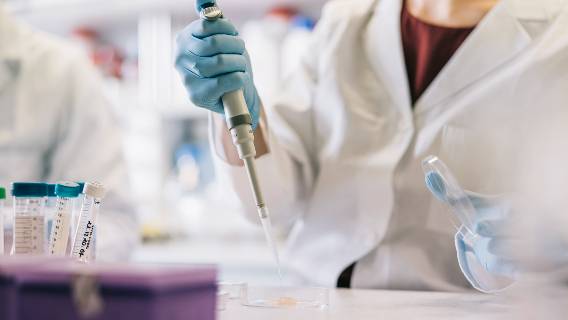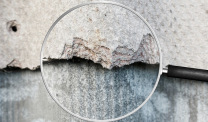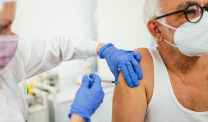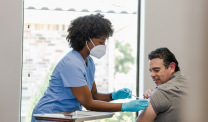Carbone: Building the Guide to BAP1 Mutation in Mesothelioma
Research & Clinical TrialsWritten by Dr. Michele Carbone • Edited By Walter Pacheco
Asbestos.com is the nation’s most trusted mesothelioma resource
The Mesothelioma Center at Asbestos.com has provided patients and their loved ones the most updated and reliable information on mesothelioma and asbestos exposure since 2006.
Our team of Patient Advocates includes a medical doctor, a registered nurse, health services administrators, veterans, VA-accredited Claims Agents, an oncology patient navigator and hospice care expert. Their combined expertise means we help any mesothelioma patient or loved one through every step of their cancer journey.
More than 30 contributors, including mesothelioma doctors, survivors, health care professionals and other experts, have peer-reviewed our website and written unique research-driven articles to ensure you get the highest-quality medical and health information.
About The Mesothelioma Center at Asbestos.com
- Assisting mesothelioma patients and their loved ones since 2006.
- Helps more than 50% of mesothelioma patients diagnosed annually in the U.S.
- A+ rating from the Better Business Bureau.
- 5-star reviewed mesothelioma and support organization.
Testimonials
My family has only the highest compliment for the assistance and support that we received from The Mesothelioma Center. This is a staff of compassionate and knowledgeable individuals who respect what your family is experiencing and who go the extra mile to make an unfortunate diagnosis less stressful. Information and assistance were provided by The Mesothelioma Center at no cost to our family.LashawnMesothelioma patient’s daughter
How to Cite Asbestos.com’s Article
APA
Carbone, M. (2024, January 29). Carbone: Building the Guide to BAP1 Mutation in Mesothelioma. Asbestos.com. Retrieved April 24, 2024, from https://www.asbestos.com/news/2022/05/31/carbone-building-guide-bap1-mutation-mesothelioma/
MLA
Carbone, Michele. "Carbone: Building the Guide to BAP1 Mutation in Mesothelioma." Asbestos.com, 29 Jan 2024, https://www.asbestos.com/news/2022/05/31/carbone-building-guide-bap1-mutation-mesothelioma/.
Chicago
Carbone, Michele. "Carbone: Building the Guide to BAP1 Mutation in Mesothelioma." Asbestos.com. Last modified January 29, 2024. https://www.asbestos.com/news/2022/05/31/carbone-building-guide-bap1-mutation-mesothelioma/.

Over the years, I have “collected” many families affected by the BAP1 cancer syndrome, a novel medical condition we discovered in 2011. Pathogenic germline mutations, most of them BAP1 mutations, are estimated to be found in 10% of all those diagnosed with mesothelioma.
BAP1 germline mutations occur in people born with only one functioning copy of the BAP1 gene, while the other copy is mutated and inactive. The mutations make these people very susceptible to developing cancer, in particular mesothelioma and melanoma.
On the bright side, when mesothelioma develops in carriers of germline BAP1 mutations, patients have a much better prognosis. Some are cured.
Discovering the BAP1 Mutation
In 2011, we identified the gene that when mutated was responsible for most familiar mesotheliomas in the U.S. and abroad. Next we discovered key mechanisms of BAP1 activity – i.e., why people develop cancer when BAP1 is mutated.
We discovered that mesotheliomas in carriers of germline BAP1 mutations were different, as these patients lived much longer. We found that acquired BAP1 mutations were very frequent in sporadic – not genetically related – mesothelioma, underscoring the importance of BAP1 mutations in causing mesothelioma. We elucidated the mechanisms and importance of BAP1 immuno-staining in diagnosis.
Most recently, we identified other genes that predisposed to mesothelioma when mutated in the germline. We also discovered mechanisms of gene-environment interaction and asbestos carcinogenesis.
Getting Families Involved Was Key
Over the years, more and more families called me and donated their specimens to our research. Their specimens and clinical information were critical to our discoveries.
At the same time, I learned of the many problems these families face as many physicians are not yet aware of this genetic condition and it is difficult to coordinate cancer screening and therapy for them and their affected families.
I have one person in my lab whose job is to keep in contact with all these families. We help them deal with the issues associated with this condition.
In this new paper, combining my experience and that of my colleagues, we offer some clinical, practical guidelines to help mesothelioma patients carrying germline BAP1 mutations and their affected relatives.
We also include two clinical trials that Drs. Hassan and Schrump developed at the National Cancer Institute. These trials are a terrific improvement to help these patients and their families in one of the best hospitals in the world, the Bethesda Medical Center.
Educating Families and Physicians
However, many BAP1 carriers do not go to the NCI, and they have to deal every day with physicians who do not know what to do with them. This latest paper in JTO was co-authored by most of the top physicians and scientists in the field of mesothelioma worldwide.
This manuscript will be a very important resource to all carriers of BAP1 mutations, because they can share this manuscript with their physicians who in a single paper will find the information about this new medical condition and how to best deal with BAP1 mutant carriers.
I feel good about all these years of work. We did not waste our time and money. I am very grateful to the federal agencies (NCI, NIH, DoD) that made this research possible.
I also want to thank the private donors and foundations, including the American Cancer Society, the Honeywell International Inc, the United-4-A-Cure, the Melohn family, the Germane-Hope Brennan Foundation, and the Maurice and Joanna Sullivan Foundation.
Without significant resources, we would not have been able to make so much progress in a relatively short period of time. And I am very grateful to the many collaborators, in the United States and abroad, who worked with us during the years to achieve all this.
Of course, I am most grateful to all the families stricken by mesothelioma who donated their specimens to us. They allowed us to make these discoveries.
Family Involvement Is Critical to Research
Let me close with some news.
First, Laura: I diagnosed her pleural mesothelioma 20 years ago. I had flown to Wisconsin to be in her surgery room and read the frozen section. We did not know at the time that her mesothelioma was caused by BAP1 mutations.
We discovered BAP1 as the cause of this new cancer syndrome by studying Laura and other members of her family and a family in Louisiana.
A few years later, Laura developed breast cancer. As carriers of BAP1 mutations often do, she survived that too. She visited our lab this past January and she looked at her own cells in tissue culture. I cooked for her and for her family. She was happy and I was happy to see her.
She died of a heart attack 3 weeks ago, which is very sad, but her cells continue to live in our lab, and we will continue to make discoveries studying them.
To the best of my knowledge, Laura is the first well-documented mesothelioma patient who was cured of her pleural mesothelioma.
I can easily predict that many more will follow among carriers of germline mutations. These mesotheliomas are biologically different — they are for the most part less aggressive, as we discuss in this new paper in JTO.
Future May Be Bright
Then there is the most intriguing part: Why are carriers of BAP1 germline mutation — and carriers of some other gene mutations — capable of fighting mesothelioma? And possibly other cancers?
Is it that the tumor cell is less aggressive? Or is it that their healthy cells, the microenvironment as we scientists call it, which includes the immune system, are able to fight mesothelioma? Why?
If we are able to discover how it is that carriers of germline BAP1 mutations keep cancer at bay, we should be able to develop novel effective therapeutic strategies for all mesothelioma patients. Maybe even for all cancer patients, so we could help them all. That would be wonderful.
That is what we are trying to discover now, what keeps my team and I awake at night. I think we will succeed, but the timing will depend largely on the amount of funding we will have available for this research.
So far, my team and I have always delivered what we promised. With a little luck and some more funding, we will deliver again.
(Dr. Michele Carbone is director of Thoracic Oncology at the University of Hawaii Cancer Center and the world’s foremost authority on the BAP1 genetic mutation that plays a role in the development of pleural mesothelioma cancer.)







